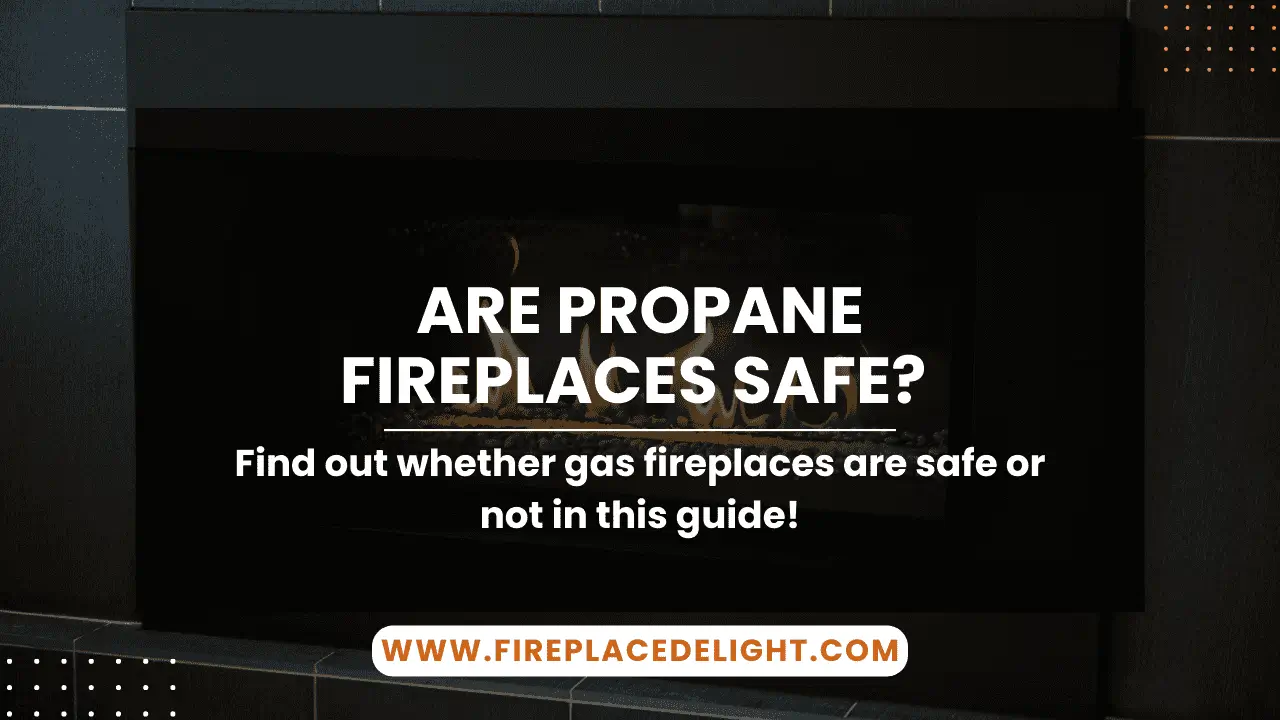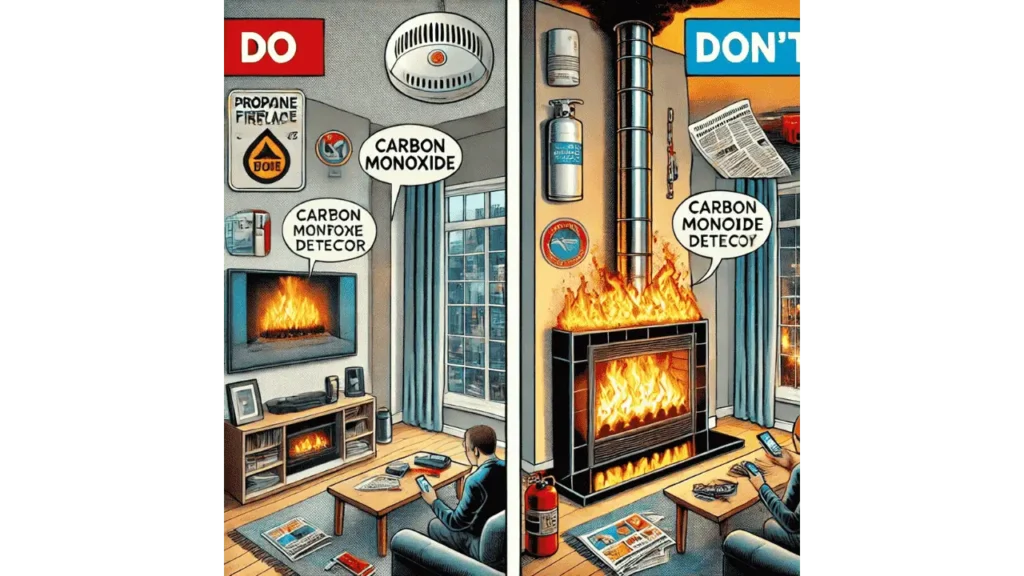Yes, propane fireplaces are safe when used properly and maintained regularly. They have become a popular choice among homeowners seeking a reliable and efficient heating solution. They offer the charm of a traditional fireplace without the hassle of wood-burning alternatives. Understanding how propane fireplaces work and their built-in safety features can help homeowners make informed decisions about their heating needs.
Understanding Propane Fireplaces
Propane fireplaces come in various designs, each catering to different installation preferences and space requirements.
Inserts
Propane fireplace inserts are designed to fit into existing wood-burning fireplaces, converting them into a more efficient and cleaner-burning option. They provide an excellent way to upgrade an old fireplace while retaining the existing aesthetic.
Standalone Units
Standalone propane fireplaces can be placed in any room without requiring an existing fireplace structure. These units offer flexibility and are available in a wide range of styles to complement different interior designs.
Built-In Models
Built-in propane fireplaces are designed to be permanently installed within a wall or custom enclosure. They create a seamless and modern appearance, making them a great addition to newly constructed homes or renovation projects.
Propane Fireplace Safety Features
Modern propane fireplaces are equipped with various safety features to ensure secure operation.
Controlled Burning
Propane fireplaces are designed to provide controlled and consistent burning, reducing the risk of sudden flare-ups or uneven heat distribution.
No Harmful Emissions
Unlike wood-burning fireplaces, propane models do not produce harmful creosote or excessive smoke, minimizing indoor air pollution and health risks.
Ease of Use
Propane fireplaces come with user-friendly controls, making it easy to adjust flame intensity and heat output to suit individual preferences.
Ventilation
Proper ventilation is essential for propane fireplaces to operate safely. Vented models expel combustion byproducts outside the home, ensuring indoor air quality remains high.
Consistent Fuel Supply
A steady propane supply ensures uninterrupted operation without the need for constant refueling, providing peace of mind during colder months.
Automatic Shut-Off Valves
These safety mechanisms automatically turn off the gas supply if any irregularities are detected, preventing potential hazards such as gas leaks.
Electronic Ignition Systems
Modern propane fireplaces feature electronic ignition systems, which eliminate the need for pilot lights and provide a safer, more energy-efficient startup process.
Thermal Glass and Safety Screens
The glass and safety screens used in propane fireplaces are designed to remain cool to the touch, preventing accidental burns and enhancing overall safety.
Advantages Over Wood Burning Fireplaces
Propane fireplaces offer several advantages compared to traditional wood-burning models.
Efficiency and Performance
Propane fireplaces provide consistent heat output with minimal energy waste, making them a cost-effective heating solution.
Environmental Impact
With lower emissions and no wood consumption, propane fireplaces are a more environmentally friendly option, helping to reduce the carbon footprint as well as the white film production.
Convenience and Cleanliness
Unlike wood-burning fireplaces, propane models require minimal maintenance and do not produce ash or soot, keeping the living space cleaner.
Conclusion
Propane fireplaces are a safe and efficient alternative to traditional wood-burning fireplaces. With built-in safety features, reliable performance, and environmental benefits, they provide a practical heating solution for modern homes. Homeowners can enjoy the warmth and ambiance of a fireplace without the concerns associated with wood burning.
- 27 Farmhouse Fireplace Ideas That Bring Warmth & Charm - August 18, 2025
- 25 Fireplace Lighting Ideas to Illuminate Your Hearth - August 7, 2025
- How to Replace an Electric Fireplace Switch? - August 5, 2025



